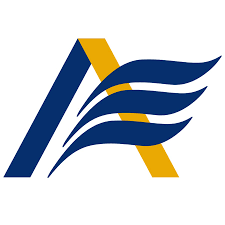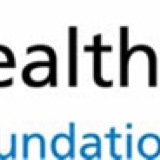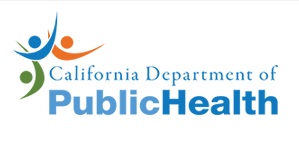Title Page
-
Facility Site ITM Conducted:-
-
Calendar Year to Calendar Year: Example 2021-2022
-
Prepared By:
-
Add signature
-
Director of Plant Email Address:
-
Director of Plant Cell Phone:
-
Facility Administrator/Executive Director Email Address:
ITM of Fire Protection Systems
-
Facility Name and Address Information:
-
Type of Life Safety Survey:
-
Please describe:
-
Last Survey Date:
K353 SPRINKLER SYSTEM: NFPA 25
-
Wet Systems are the most commonly used sprinkler systems in the fire protection industry. These systems maintain a static water pressure and are monitored by an alarm device that will actuate if water moves through the pipes. A wet system is your standard fire protection system that you see in restaurants, office buildings , Healthcare, and homes, etc. The alarms on these systems are to be tested regularly to assure that if there were a real fire the system will operate and the alarms will actuate in a timely fashion alerting the fire department of a problem in the building.
-
Fire Sprinkler Company Contact Information: I.E. Name, Address, Emergence Service Phone Number, Facility, Account Number.
-
Date of Wet Sprinkler Heads:
-
Quarterly Inspection - Testing - Maintenance Performed By:
-
Quarterly Date:
-
Quarterly Date:
-
Quarterly Date:
-
Quarterly Date:
-
Quarterly Date:
-
(13.2.5) Test Main Drain Annually Date:
-
(13.3.3.5) Test Supervisory Switches Semi-Annually Date 1:
-
(13.3.3.5) Test Supervisory Switches Semi-Annually Date 2:
-
(13.3.3.1) Close & Open Control Valves Annually Date:
-
(13.3.4.1) Lubricate & Exercise OS&Y Valves Annually Date:
-
(5.3.3.1) Test Water-Flow Alarms Quarterly Date:
-
Quarterly Date:
-
Quarterly Date:
-
Quarterly Date:
-
Quarterly Date:
-
(NFPA 101 18.3.5.1) All Main, PIV, & All Zone Valves are Supervised:
-
(5.3.21) Test or Replace Pressure Gauges Every 5 Yrs.:
-
Year Tested / Replaced:
-
(5.3.3.3) Test Alarms Quarterly via Inspection Test Valve - Quarterly Date:
-
Quarterly Date:
-
Quarterly Date:
-
Quarterly Date:
-
Quarterly Date:
-
(5.2.4.1) Check PSI Monthly:
-
(13.4.1.2) Internal Check of Alarm Valve Every 5 Yrs - Date:
-
Inspection - Testing - Maintenance Performed By:
DRY SYSTEMS: NFPA 25
-
Dry Systems are a mechanical type of fire protection system that maintains air pressure in in the pipes of the system. These systems are used when there is an issue with the potential of the pipes freezing such as in a parking garage. On Dry systems there is a dry valve in a heated area that controls the system. This valve holds back the water until the system loses enough air pressure where the valve can no longer hold back the water pressure. The valve will then trip sending water flowing through the pipes. The water will fill the system and flow water through whichever sprinkler head(s) have fused. These systems are to be tested regularly by simulating an air loss on the system which will then trip the dry valve.
A Dry system needs to be constantly maintained and all low points in the system need to be drained regularly to assure that there is no water in the pipes that could freeze. -
Does Facility Have A Dry Sprinkler System:
-
Dry System Company Contact Information: I.E. Name, Address, Emergence Service Phone Number, Facility, Account Number.
-
Date of Dry Pendant Sprinkler Heads:
-
(13.4.4.2.6 If Provided) Test Low Air Pressure Alarm Quarterly Date:
-
Quarterly Date:
-
Quarterly Date:
-
Quarterly Date:
-
Quarterly Date:
-
(13.4.4.2.1) Check Priming Level Quarterly Date:
-
Quarterly Date:
-
Quarterly Date:
-
Quarterly Date:
-
Quarterly Date:
-
(5.2.4.2) Check PSI Weekly
-
(4.1.8, 13.3.1) Valve Tag Provided
-
(13.4.4.2.2) Annual Flow Test Conducted On - Date:
-
Inspection - Testing - Maintenance Performed By:
-
(13.4.4.22.2) 3-Year Full Flow Test On - Date:
-
Inspection - Testing - Maintenance Performed By:
-
(5.3.4) Anti-Freeze Loop Annual Test On:
-
Inspection - Testing - Maintenance Performed By:
-
-
K345 FIRE ALARM SYSTEM: NFPA 72
-
A fire alarm system is tested and maintained in accordance with an approved program complying with the requirements of NFPA 70, National Electric Code, and NFPA 72, National Fire Alarm and Signaling Code. Records of systems acceptance, maintenance, and testing are readily available. (9.6.1.3) (9.6.1.5) NFPA 70, NFPA 72.
-
Fire Alarm Company Contact Information: I.E. Name, Address, Emergence Service Phone Number, Facility, Account Number
-
Quarterly Inspection - Testing - Maintenance Performed By:
-
Quarterly Date:
-
Quarterly Date:
-
Quarterly Date:
-
Quarterly Date:
-
Quarterly Date:
-
Test Off-Premises Transmission Equip. Semi-Annually Date 1:
-
Test Off-Premises Transmission Equip. Semi-Annually Date 2:
-
Conduct (Battery) Load voltage Test Semi-Annually Date 1:
-
Conduct (Battery) Load voltage Test Semi-Annually Date 2:
-
Conduct 30 Min Battery Discharge Test Annually Date:
-
100% of Devices Tested Annually Date:
-
Replace Battery(s) Every 5 Years. Replaced Date:
-
(14.4.5.3) Smoke Detector Sensitivity Checked - Date:
K353 FIRE PUMPS: NFPA 25
-
Fire Pumps are used on fire protection systems in which the dedicated water supply for the system cannot meet the potential demand of the system. The pump pushes large amounts of water at a rapid rate through the system increasing the amount of water to fight a fire. Typically pumps are used when a building is too big for the dedicated water supply to effectively protect the building on its own. Fire pumps are to be run regularly and tested annually to guarantee that it will operate properly in a time of need.
In a test the licensed sprinkler fitter simulates a fire on the sprinkler system which will engage the fire pump to run. During the test pressure readings are taken to make sure that the pump is pushing out the right amount of pressure to adequately supply that particular system. If during the test the pump fails or malfunctions in any way we then make the proper repairs so that the pump functions properly. -
Does Facility Have A Fire Pump:
-
Fire Pump Company Contact Information: I.E. Name, Address, Emergence Service Phone Number, Facility, Account Number.
-
(8.3.3,8.3.5.3, 8.4, & 4.3) Annual Flow Test Report Date:
-
Fire Pump Inspection - Test - Maintenance Performed By:
-
Documented In Facility Log Book:
-
(8.2.2 (1) through 8.2.2 (5) (8.2.2) Visually Inspect Weekly - Documented Weekly In Facility Log Book:
-
( 8.3.2.1 through 8.3.2.8 (8.3) Visually Inspect Weekly While Running - Documented Weekly In Facility Log Book:
-
(8.5.1) Preventative Maintenance Program Per MFG.:
-
ELECTRIC MOTOR DRIVEN PUMPS
-
(8:3.1.2) Run Monthly For 10 Minutes - Documented In Facility Log Book
-
Transfer switches tested and exercised in accordance with NFPA 110 (8.3.4.2) Date:
-
DIESEL ENGINE DRIVEN
-
(8.3.2.4) Run Weekly For 30 Minutes - Documented Weekly In Facility Log Book:
-
(8.5.1) Preventive Maintenance Performed Date:
-
Inspection - Testing - Maintenance Performed By:
-
Maintain Transfer Switch(s) (if provided) per NFPA 110
FIRE HOSES: NFPA 25 & 1962
-
Does Facility Have A Fire Hoses:
-
If YES Please Provide Fire Hose Location(s):
-
NFPA 25 (6.2.1) NFPA 1962 (4.1.2) Inspect Annually - Date:
-
Fire Hose(s) Inspection - Testing - Maintenance Performed By:
-
NFPA 1962 (4.1.7) Re-rack Annually - Date:
-
Fire Hose(s) Re-rack Performed By:
-
NFPA 1962 (4.3.2) Hydro-static Test At 5 Years & Every 3 Years Thereafter Date:
-
NFPA 25 (6.3.2.1) Inspection - Testing - Maintenance Performed By:
-
NFPA 25 (6.3.1.1) Flow Test Stand Pipe Every 5 Years - Date:
-
Inspection - Testing - Maintenance Performed By:
FIRE HYDRANTS
-
Does Facility Have A Fire Hydrant(s) On Campus
-
If Yes How Many
-
Hydrant Location(s) On Campus
-
(7.3.2) Hydrant Flow Test - Annual Date:
-
Fire Hydrant Inspection - Testing - Maintenance Performed By:
K355 FIRE EXTINGUISHERS: NFPA 10
-
Portable Fire Extinguishers: Portable fire extinguishers are selected, installed, inspected, and maintained in accordance with NFPA 10, Standard for Portable Fire Extinguishers. 18.3.5.12, 19.3.5.12, NFPA 10
-
How Many ABC Fire Extinguishers On-Site:
-
How Many K-Class Fire Extinguishers On-Site:
-
Fire Sprinkler Company Contact Information: I.E. Name, Address, Emergence Service Phone Number, Facility, Account Number.
-
Fire Extinguisher Inspection - Testing - Maintenance Performed By:
-
(7.3.1.1) Annual Maintenance Date:
-
(8.3) Hydro-static Test ( 5 or 12 yrs.) (label & service collar provided): 5 Yr Dates
-
(8.3) Hydro-static Test ( 5 or 12 yrs.) (label & service collar provided): 12 Yr Date:
-
(7.3.3.1 & 7.3.3.2) 6 yr. Maintenance (label & service collar provided) Date:
-
(7.2.1.2) Inspect Monthly By Facility Maintenance - Documented On Fire Ext. Tag:
-
(7.3.2.2) Replace Safety Seals Annually Date:
-
(5.3.2.5) Class "K" in kitchen:
K324 KITCHEN RANGE EXTINGUISHING SYSTEM NFPA 96, 17 (DRY) & 17A (WET)
-
Fire Sprinkler Company Contact Information: I.E. Name, Address, Emergence Service Phone Number, Facility, Account Number.
-
NFPA 17 (11.3.1) 17A (7.3.3) Semi-Annual Inspection - Testing - Maintenance Performed By:
-
Semi-Annual Inspection Date 1:
-
Semi-Annual Inspection Date 2:
-
Test pressure gauges every 5 years (9.3.6)- Date:
-
Dry Chemical Hydrostatic Testing Required Every 12Yrs. Date:
-
NFPA 17 (11.2.1) 17A (7.2.1) Inspect Monthly By Facility Maintenance - Documented On Fire Ext. Tag:
-
NFPA 96 (11.5) Inspection - Clean Hood Semi-Annual Inspection Performed By:
-
(11.5) Clean Hood Semi-Annual Inspection Date 2:
-
(11.5) Clean Hood Semi-Annual Inspection Date 1:
-
(11.6.10) Sticker On Hood:
K521 FIRE DAMPERS: NFPA 90A
-
NOTE: S&C-10-04 permits Hospitals to service Fire Damper every 6-years; SNF every 4-years
-
Fire Damper Company Contact Information: I.E. Name, Address, Emergence Service Phone Number, Facility, Account Number.
-
NFPA 90A (5.4.8) & 80 (19.4) Service Every 4 Years - Year Last Performed Date:
K291 EMERGENCY LIGHTING: NFPA 101
-
(7.9.3.1.3) Test Monthly - Exit Lights Documented Monthly In Facility Log Book:
-
(7.9.3) Test Battery Powered Lighting 1.5 Hr. (90 Min) Annually Date:
K918 EMERGENCY GENERATOR: NFPA 110
-
How Many Generators Supply Facility Campus:
-
Generator Location On Campus:(s)
-
Fuel Source Type:
-
Diesel Generator - Provide Vendor Fuel Contact Information
-
Provide Diesel Fuel Type and Size Of Fuel Tank:
-
Generator Company Contact Information: I.E. Name, Address, Emergence Service Phone Number, Facility, Account Number.
-
(8.3.3) Major / Minor - Semi-Annual Maintenance Performed By:
-
Generator PM Date 1:
-
Generator PM Date 2:
-
(8.3.7) Fuel Quality Testing: A fuel quality test shall be performed at least annually using appropriate ASTM standards or the manufacturer’s recommendations.
-
(8.3.7) Fuel Sample Date:
-
(8.3.7) Fuel Sample Results:
-
(5.3) Battery Heater(s) Provided
-
(8.4.2.3) Diesel - 1.5 Hour Load Test Required If Generator Dose Not Achieve 30% KW - Does Generator Achieves 30%:
-
1.5 Load Bank Inspection - Testing - Maintenance Performed By:
-
(8.4.1) Generator Monthly Load Conducted - Documented Monthly In Facility Generator Log Book:
-
(8.4.6.1) Transfer Switch Operated Monthly - Documented Monthly In Facility Generator Log Book:
-
(8.4.2) Generator Exercise Weekly - Run For 30 Mins. - Documented Weekly In Facility Generator Log Book:
-
(8.3.4.8.4.1 & LSC 7.9.3) Documented Weekly Inspections In Facility Generator Log Book:
-
(8.3.4. & LSC 7.9.3) Documented Generator All Gauge Readings In Facility Generator Log Book: Amps, Volts, Batt, Hours
-
(8.3.6.1) Battery Specific Gravity Weekly Testing - Documented Weekly Inspections In Facility Generator Log Book:
-
(8.3.5) Transfer Switch Program - Inspection - Testing - Maintenance Program Performed By:
-
(8.3.5) Transfer Switch Program - Inspection - Testing - Maintenance Date:
K531 ELEVATORS: LSC SECTION 9.4
-
Does Facility Have Elevators:
-
How Many:
-
Elevator Company Contact Information: I.E. Name, Address, Emergence Service Phone Number, Facility, Account Number.
-
Last State Elevator Inspection Date(s):
-
(9.4.6) Routine & Periodic Inspection - Testing - Maintenance Performed By:
-
(9.4.6) Routine & Periodic Inspection - Testing - Maintenance - Records Maintained In The Facility Elevator Logbook:
-
(9.4.3.2) Existing with +25' travel distance & all NEW must meet "Firefighters Service Requirement
-
Phase I - Keyswitch @ designated level (i.e. main lobby)
-
Phase Il - Keyswitch in each cab
-
Smoke Detectors Present In Each Elevator Lobby:
-
Smoke Detectors Present In Elevator Machine Room:
-
(9.4.6) Elevator Company Tests Firefighters Service Monthly - Records Maintained In The Facility Elevator Logbook:
K712 FACILITY FIRE DRILLS
-
Fire Drills should be at conducted at least over an hour apart and should avoid patterns. Example: If the drill during the first quarter, first shift was conducted at 8:30 am, the drills for the first shift for remaining quarters should be before 7:29 am or after 9:31 am and should not repeat times throughout the year.
-
1st Shift 7 AM - 3 PM Fire Drills Date & Time:
-
Qtr 1: 7A - 3P Fire Drill:
-
Qtr 2: 7A - 3P Fire Drill:
-
Qtr 3: 7A - 3P Fire Drill:
-
Qtr 4: 7A - 3P Fire Drill:
-
2nd Shift 3 PM - 11 PM Fire Drills Date & Time:
-
Qtr 1: 3P - 11P Fire Drill:
-
Qtr 2: 3P - 11P Fire Drill:
-
Qtr 3: 3P - 11P Fire Drill:
-
Qtr 4: 3P - 11P Fire Drill:
-
3rd Shift 11 PM - 7 AM Fire Drills:
-
Qtr 1: 11P - 7A Fire Drill Date & Time:
-
Qtr 2: 11P - 7A Fire Drill Date & Time:
-
Qtr 3: 11P - 7A Fire Drill Date & Time:
-
Qtr 4: 11P - 7A Fire Drill Date & Time:











